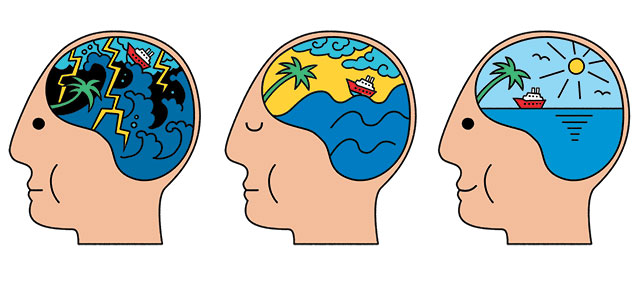“Five minutes.”
Those two words were my mother’s mantra. Even before I was old enough to tie my shoes, on just about every afternoon my mother would reach for me, pulling me gently into her peaceful space. Sometimes that was beside her on the sofa. Other times it was in our sunny kitchen. Wherever we were, we’d sit in easy silence—eyes closed, bodies still, mouths shut—for five minutes.
I was too young to realize it then, but my mother was teaching me a simple form of stillness meditation. Our five minutes were the most precious part of my day.
Stillness and meditation remain at the core of my calmness. Practicing daily helps keep me anchored down and bolstered up.
To those pressed for time, know this: If five minutes is all you have for meditation, five minutes can be all you need.
To begin, find a comfortable, quiet spot—one you can come back to regularly. Next, close your eyes. The moment you seal off the visual world—which requires a tremendous amount of psychic energy to process—you’ll feel yourself begin to calm down.
Pay attention to your breathing. Inhale slowly through your nose and exhale slowly through your mouth. Find your rhythm without becoming distracted by it. After a few breaths, lightly place your palm on your lower belly. On the inhalation, you should feel your abdomen rise; on the exhalation, it should sink.
Random thoughts, to-do lists, and nagging mental minutiae are bound to swim up, but gently push them back down. All you want to do is float. When thoughts and feelings surface, focus on your breathing. This is the whole point of meditation: learning to clear your mind of the chatter.
Meditation can include visualizing pleasant things. After a minute or so of stillness, picture yourself in a favorite, relaxing spot—strolling along a white-sand beach, maybe, or sitting beside a cool waterfall.
To come back, open your eyes slowly. Give yourself another 30 seconds or so before standing up. With luck, you’ll feel an invigorated sense of stillness and purpose to carry with you throughout the day.
The physical and emotional benefits of meditation—decreased stress, improved mental clarity, lower blood pressure, and an enhanced sense of well-being, to name a few—should last far longer than the five minutes. For me, they’ve lasted a lifetime.
Want More Guidance?
Although many places offer meditation instruction, Tara Brach’s Insight Meditation Community of Washington is easily the most popular. Her Wednesday-night class at River Road Unitarian Universalist Congregation in Bethesda draws hundreds of people. Brach, a clinical psychologist, has taught meditation for more than 35 years. There’s no registration required; a donation of $10 to $15 is suggested.
Kristin Clark Taylor (kristintay@aol.com) is at work on her fifth book, about purposeful stillness. She lives in Great Falls.
This article appears in the December 2014 issue of Washingtonian.


















